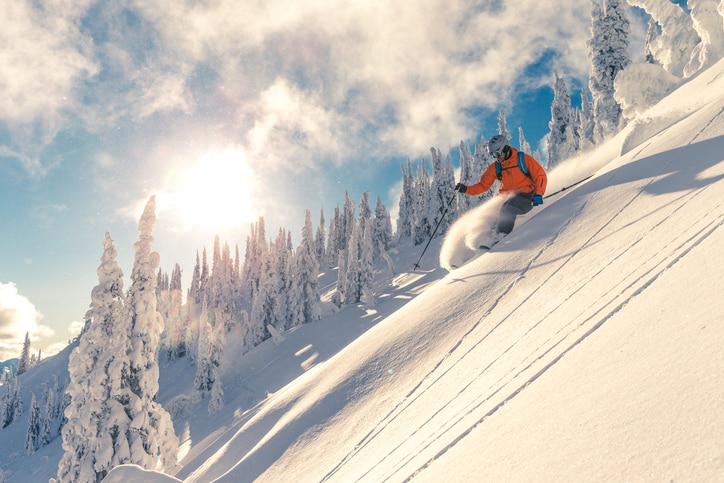New England is known for a number of outdoor attractions throughout the year, such as fishing in the spring, scenic beaches and hiking trails in summer, foliage in the autumn and snow sports in the winter.
With snowboarders and skiers coming from around the U.S. to popular mountains such as Mount Sunapee and Mount Snow, two topics always find their way into headlines – the rising cost of lift tickets and the inherent risk for injury with these activities.
Over the past 10 years, an average of 41 people have died from skiing or snowboarding-related accidents on an annual basis, according to the National Ski Areas Association. Serious injuries such as paralysis and head injuries make up about 44 of those incidents each year. The NSAA says this equals about 1 serious injury per 1 million skier or snowboarder visits to a mountain.
“Skiing and snowboarding enjoy an excellent safety record. Skiing and snowboarding are less dangerous than other high-energy participation sports, and less so than some common activities,” the NSAA said. “However, skiing and snowboarding are still challenging and require physical skills that are only learned over time with practice. The sports involve some inherent risk, but in some measure, it is the thrill that entices most skiers and riders to pursue the sports. Even with the attendant risks, the health and fitness benefits of skiing and snowboarding are enjoyed by people of all ages across the slopes each season.”
Winter Sports and Personal Injury Liability
Most New England states have laws regulating lawsuits and personal injury claims against ski resorts except in the cases of obvious negligence. The risk of the sport has been taken into consideration by the lawmakers.
For example, the Massachusetts law expects that “a skier who boards a recreational tramway shall be presumed to have sufficient abilities to use the same, and shall follow any written or oral instruction given regarding its use and no skier shall embark on a recreational tramway without authority of the operator.”
In clear language, Massachusetts assumes the skier or snowboarder has the skills needed to be on the mountain, and they can’t hold the facility liable if they get hurt. This also applies to interacting with other skiers and snowboarders on the hill.
“A skier skiing down hill shall have the duty to avoid any collision with any other skier, person or object on the hill below him, and … the responsibility for collisions by any skier with any other skier or person shall be solely that of the skier or person involved and not that of the operator, and the responsibility for the collision with any obstruction, man-made or otherwise, shall be solely that of the skier and not that of the operator, provided that such obstruction is properly marked pursuant to the regulations promulgated by the board.”
In the scenario where someone executes a jump over a skier and makes contact with them, the law states that the facility is not liable – as it was the responsibility of both skiers to keep themselves safe.
Similarly, in Vermont, the law says that skiers are liable for rescue expenses, and attorney fees and costs with the ski area operators being exempt from liability in response to rescue situations except under gross negligence.
Taking Action Against a Resort
While skiers are assigned with the majority of the responsibility because of the assumed inherent dangers of the sport, facility owners don’t get carte blanche. The law says they must still make sure to maintain the facility, equipment and provide appropriate signage. This also includes “trail maintenance and emergency vehicles, including snowmobiles” that must have flashing or rotating lights. When marking trails for danger or closure, it must be “in a manner to afford skiers reasonable notice.”
There is, however, the added difficulty of witnesses and a short window of time in which to bring an action forward against the facility. Section 71P of the law says that no action shall be brought against the ski area operator for injury unless the area was notified within 90 days of the incident.
The only exception to this is if the “court finds under the circumstances of the particular case that such ski area operator had actual knowledge of said injury or had reasonable opportunity to learn of said injury within said ninety-day period.”
So, even though the dangers of the sport are often touted, when compared to other sports, skiing and snowboarding pose significantly less danger. However, when accidents do occur, unless the facility can be found grossly negligent or failed to notify the individual of significant dangers, the burden of cost and injury fall on the skier or snowboarder.
From us here at Kiley Law Group, be safe out there.



